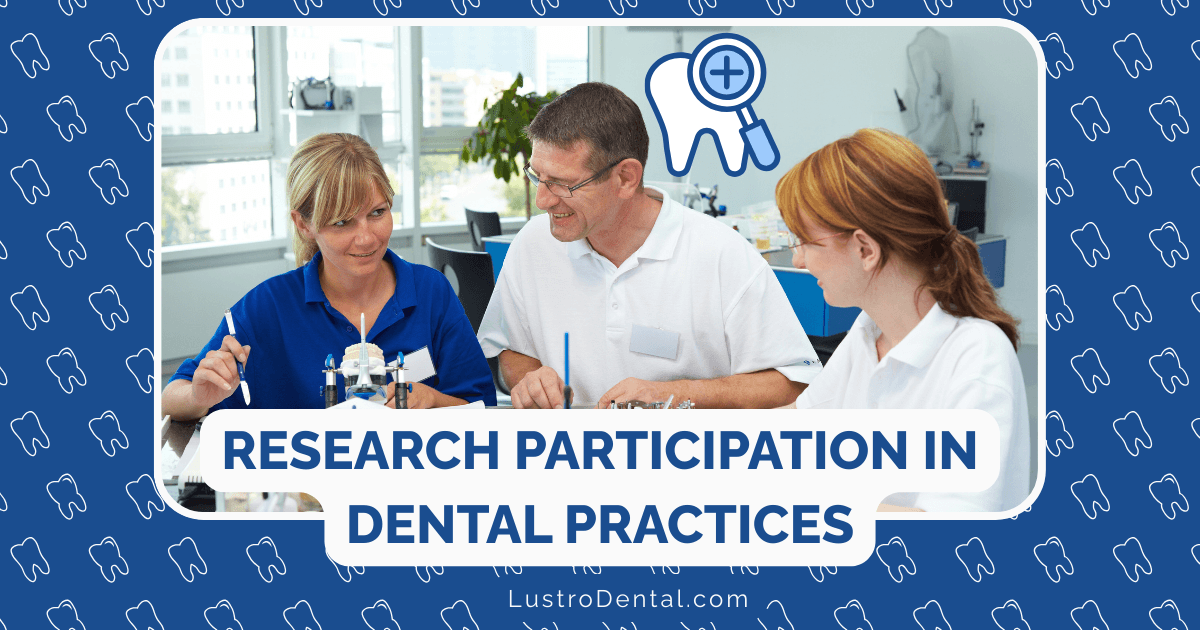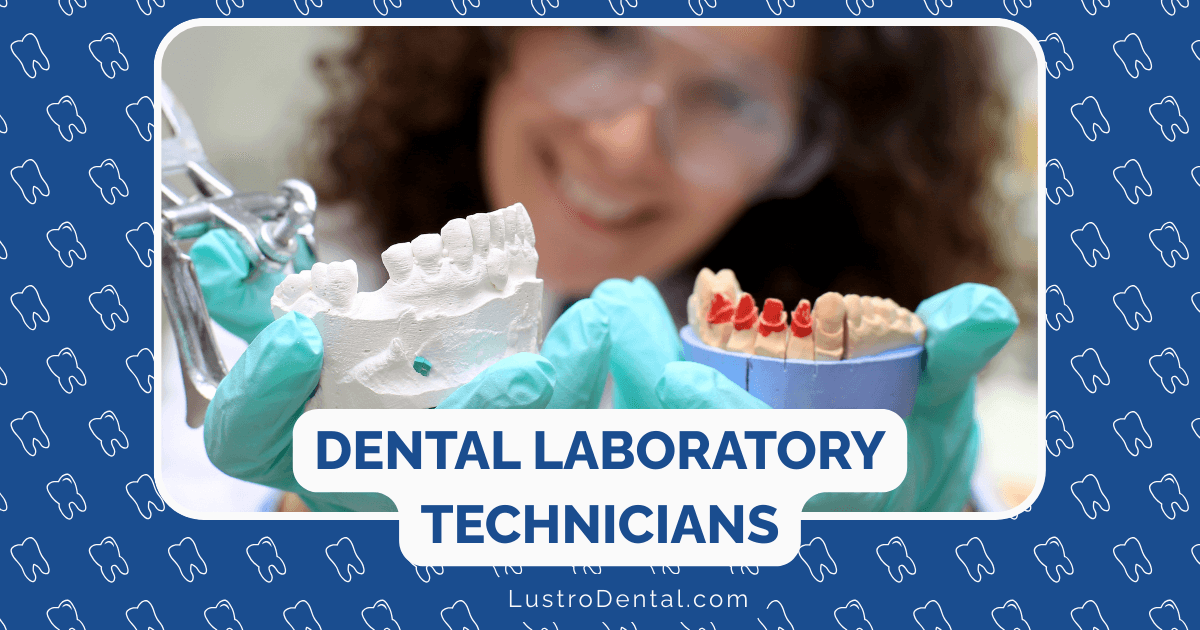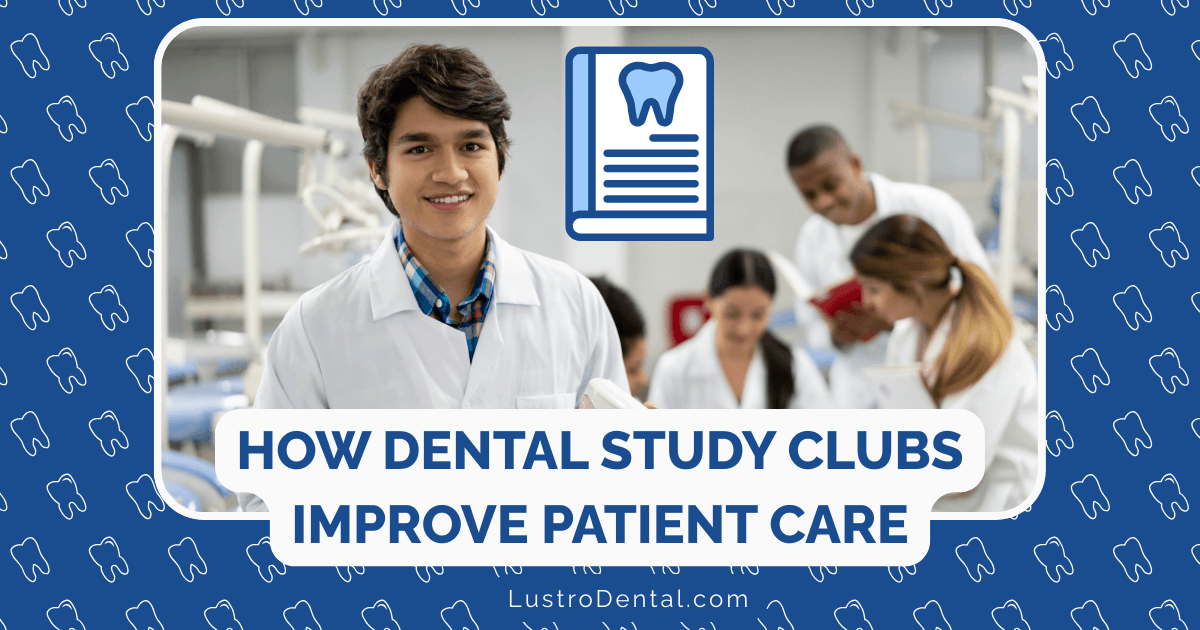Research Participation: How Dental Practices Contribute to Advancing the Field

In the evolving landscape of modern dentistry, a quiet revolution is taking place—one that bridges the gap between academic research and everyday clinical practice. Dental practices across the country are increasingly participating in research initiatives that not only advance scientific knowledge but also directly improve patient care. This collaborative approach to dental research represents a powerful model for how healthcare can evolve through the collective contributions of frontline practitioners.
While patients may seldom hear about these research efforts during their appointments, this behind-the-scenes work significantly impacts the quality of care they receive. This comprehensive exploration reveals how dental practices contribute to advancing the field through research participation and why this matters for practitioners and patients alike.
The Evolution of Dental Research: From Ivory Tower to Dental Chair
Traditionally, dental research has been primarily conducted in academic settings, with findings eventually filtering down to clinical practice—often after significant delays. This “translational gap” between research and implementation has been a persistent challenge in healthcare.
Dr. James Anderson, Director of Clinical Research at a major dental school, explains: “Historically, there’s been a disconnect between what researchers study and what practitioners need to know. Research conducted solely in academic settings might not always address the practical questions that arise in everyday clinical practice.”
This recognition has led to a fundamental shift in how dental research is conducted, with a growing emphasis on practice-based research that directly involves dental practitioners and their patients.
Practice-Based Research Networks: The Collaborative Model
At the forefront of this evolution are Practice-Based Research Networks (PBRNs)—organized systems that engage practicing dentists in the research process. The National Dental Practice-Based Research Network (NDPBRN), supported by the National Institute of Dental and Craniofacial Research, represents one of the most successful models of this approach.
What Are Dental PBRNs?
PBRNs are collaborative networks of dental practices committed to advancing knowledge through research conducted in real-world clinical settings. According to the NDPBRN, over 8,500 dental practitioners, including dentists and hygienists, currently participate in their network.
These networks:
- Conduct studies directly relevant to everyday dental practice
- Engage practitioners as both researchers and subjects
- Address questions that arise from real clinical experiences
- Accelerate the implementation of research findings into practice
Dr. Sarah Johnson, a general dentist and PBRN participant, describes her experience: “Being part of a research network has transformed how I practice. Instead of just reading about new approaches in journals, I’m actively contributing to generating that knowledge while simultaneously implementing evidence-based improvements in my practice.”
Types of Research Conducted in Dental Practices
The research conducted through dental practice participation spans a wide spectrum of topics and methodologies:
Observational Studies
These studies examine existing patterns of care, patient outcomes, and decision-making processes without intervening in normal practice. For example, a recent NDPBRN study analyzed factors influencing dentists’ decisions to repair or replace defective restorations, providing valuable insights into treatment variation.
Clinical Trials
Some practices participate in clinical trials testing new materials, techniques, or technologies. These studies follow rigorous protocols and provide the highest level of evidence for treatment efficacy. A 2024 PBRN-based clinical trial compared the longevity of different filling materials in posterior teeth, generating data from thousands of restorations placed in real-world conditions.
Retrospective Chart Reviews
These studies analyze existing patient records to identify patterns, outcomes, and associations. A large-scale chart review conducted across 200 PBRN practices in 2023 examined the relationship between specific medications and dental complications, helping identify patients at higher risk.
Qualitative Research
Some studies focus on understanding perceptions, experiences, and decision-making processes through surveys, interviews, and focus groups. A recent qualitative study explored patient and provider perspectives on teledentistry, informing best practices for this emerging approach.
Implementation Science
This research examines how best to incorporate evidence-based practices into routine care. A 2024 PBRN study evaluated different strategies for implementing new caries risk assessment protocols, identifying the most effective approaches for practice adoption.
How Dental Practices Contribute to Research
Dental practices can participate in research at various levels, depending on their interest, capacity, and resources:
1. Data Collection and Reporting
At the most basic level, practices contribute by systematically collecting and reporting data on specific procedures, outcomes, or patient characteristics. This might involve:
- Documenting treatment decisions and outcomes
- Administering patient surveys
- Recording specific clinical measurements
- Photographing clinical conditions (with appropriate consent)
2. Protocol Implementation
Some practices implement specific research protocols, which might include:
- Using standardized assessment tools
- Following specific treatment algorithms
- Collecting samples for laboratory analysis
- Conducting follow-up assessments at predetermined intervals
3. Patient Recruitment
Practices often serve as recruitment sites for larger studies, helping identify eligible participants and facilitating their enrollment in research projects.
4. Full Research Partnership
The most engaged practices become true research partners, participating in:
- Study design and planning
- Protocol development
- Data analysis and interpretation
- Dissemination of findings through publications and presentations
Dr. Michael Chen, a periodontist and active PBRN participant, notes: “What makes practice-based research so powerful is that it allows us to study questions that matter to us and our patients, in the settings where care actually happens. The findings are immediately relevant and applicable.”
Benefits for the Advancement of Dentistry
The participation of dental practices in research generates numerous benefits that advance the field as a whole:
Accelerated Knowledge Translation
Practice-based research dramatically reduces the time between discovery and implementation. A 2024 study found that findings from PBRN research were implemented in participating practices an average of 3.2 years faster than findings from traditional academic research.
Increased Clinical Relevance
Research questions arising from practice settings tend to address immediate clinical needs rather than theoretical concerns. This ensures that research resources are directed toward solving problems that matter most to practitioners and patients.
Dr. Lisa Williams, a dental researcher, explains: “When practitioners help shape research questions, we study what actually keeps clinicians up at night—the everyday challenges they face in delivering optimal care.”
Diverse Patient Populations
Practice-based research includes more diverse patient populations than typical academic studies, which often rely on convenience samples. This diversity enhances the generalizability of findings to real-world settings.
According to the NDPBRN, their studies have enrolled over 75,000 patients and analyzed health records from more than 790,000 patients across diverse geographic and demographic contexts.
Large Sample Sizes
By leveraging multiple practices, PBRNs can achieve sample sizes that would be difficult to obtain in single-center studies. This statistical power allows for more robust findings and the ability to detect smaller but clinically meaningful effects.
Real-World Effectiveness
While traditional clinical trials establish efficacy under ideal conditions, practice-based research demonstrates effectiveness under real-world constraints. This distinction is crucial for understanding how interventions perform in everyday practice.
Identification of Practice Variations
Research across multiple practices reveals variations in treatment approaches, helping identify best practices and areas where standardization might improve outcomes.
A 2023 PBRN study examining management of early carious lesions found sevenfold variations in treatment approaches across regions, highlighting the need for clearer clinical guidelines.
Benefits for Participating Dental Practices
Dental practices that engage in research experience numerous direct benefits:
Enhanced Clinical Decision-Making
Participation in research fosters an evidence-based approach to clinical care. Practitioners become more adept at critically evaluating evidence and incorporating research findings into their decision-making.
Dr. Robert Thompson, a general dentist, shares: “Since joining our local research network, I’ve become much more analytical about my clinical decisions. I find myself regularly asking, ‘What’s the evidence for this approach?’ rather than simply relying on what I was taught in dental school.”
Professional Development
Research participation provides valuable professional development opportunities, including:
- Training in research methods and good clinical practice
- Exposure to cutting-edge techniques and technologies
- Continuing education credits
- Opportunities to present at conferences and contribute to publications
Practice Differentiation
Involvement in research can differentiate a practice in a competitive marketplace. Patients often perceive research participation as an indicator of a practice’s commitment to excellence and innovation.
Quality Improvement
The systematic data collection and analysis inherent in research participation often reveal opportunities for quality improvement within the practice.
Dr. Jennifer Martinez notes: “The data we collected for a restoration longevity study revealed that our failure rates for certain procedures were higher than the network average. This prompted us to examine our techniques and materials, ultimately leading to significant improvements in our outcomes.”
Financial Compensation
Many research projects provide financial compensation for the time and resources invested by participating practices. While rarely a primary motivation, this compensation helps offset the costs associated with research activities.
Collegial Connections
Research networks foster connections between practitioners, specialists, and academic researchers, creating valuable professional relationships and referral networks.
Benefits for Patients
Ultimately, the most important beneficiaries of practice-based research are patients, who experience numerous advantages:
Access to Cutting-Edge Care
Patients in practices that participate in research often gain early access to innovative techniques, materials, and technologies being studied.
Evidence-Based Treatment
These practices tend to implement evidence-based approaches more consistently, ensuring that patients receive care supported by the best available scientific evidence.
Comprehensive Assessment
Research protocols frequently involve more thorough assessment than might occur in routine care, potentially identifying issues that might otherwise be overlooked.
Contribution to Scientific Advancement
Many patients find satisfaction in knowing that their treatment experiences contribute to advancing dental knowledge that will benefit others.
Sarah Johnson, a patient who participated in a PBRN study on dental anxiety management, shares: “It felt good knowing that my experience would help dentists better understand how to help other nervous patients. Plus, the extra attention and follow-up I received as part of the study was reassuring.”
Improved Communication
Practices involved in research often develop enhanced communication skills and patient education materials as part of their study participation, benefiting all patients in the practice.
Challenges and Solutions in Practice-Based Research
Despite its benefits, practice-based research faces several challenges:
Time Constraints
Challenge: Busy clinical schedules leave limited time for research activities.
Solution: Well-designed practice-based studies integrate data collection into normal workflows and provide administrative support to minimize disruption. The NDPBRN emphasizes that their studies are designed to “integrate into routine practice with minimal disruption to clinical operations.”
Research Training
Challenge: Many practitioners lack formal training in research methods.
Solution: PBRNs provide targeted training in research fundamentals, often through online modules and mentorship from experienced researchers. The NDPBRN offers training that qualifies for continuing education credit, addressing both research needs and professional development requirements.
Patient Recruitment
Challenge: Enrolling patients in studies can be difficult, particularly for interventional research.
Solution: PBRNs develop streamlined consent processes and patient education materials that explain the benefits of research participation. Some networks provide recruitment specialists who can assist practices with this process.
Data Quality
Challenge: Ensuring consistent, high-quality data collection across multiple practices can be challenging.
Solution: Standardized data collection tools, electronic data capture systems, and regular quality checks help maintain data integrity. The NDPBRN employs regional coordinators who monitor data quality and provide support to participating practices.
The Future of Practice-Based Dental Research
As we look toward 2025 and beyond, several trends are shaping the evolution of practice-based dental research:
Integration of Digital Technologies
Advanced digital tools are streamlining research participation, including:
- Electronic data capture systems that integrate with practice management software
- Intraoral scanners that automatically collect standardized clinical images
- Patient-reported outcome measures collected through mobile applications
- Remote monitoring technologies that facilitate long-term follow-up
Focus on Health Equity
Practice-based research networks are increasingly prioritizing studies that address oral health disparities and improve care for underserved populations. According to AcademyHealth, a key focus for 2025 is “developing comprehensive, integrated health frameworks that connect oral and general health care” with particular attention to vulnerable populations.
Integration with Medical Research
The recognition of oral-systemic health connections is driving greater integration between dental and medical research networks. Emerging collaborative studies examine topics such as:
- Oral manifestations of systemic diseases
- Dental screening for medical conditions
- Coordination of care between dental and medical providers
- Impact of oral health interventions on systemic health outcomes
Artificial Intelligence Applications
AI technologies are creating new opportunities for practice-based research, including:
- Automated analysis of radiographic and clinical images
- Pattern recognition in large datasets
- Decision support systems that can be evaluated in real-world settings
- Natural language processing of clinical notes and patient feedback
According to DSO Pro, early adopters of AI technology in dental practices reported a 13% increase in annual net production for restorative and periodontal treatments, highlighting the potential impact of these technologies.
Patient-Centered Research
Future practice-based research will increasingly incorporate patient priorities and perspectives, including:
- Patient involvement in setting research priorities
- Collection of patient-reported outcomes
- Studies examining shared decision-making processes
- Evaluation of patient experience and satisfaction
How Dental Practices Can Get Involved
For dental practices interested in contributing to research, several pathways exist:
Join an Established Network
The National Dental PBRN welcomes new participants at various levels of engagement, from simply receiving information to full participation in clinical studies. According to their FAQ page, participation is free, with no enrollment or membership fees.
Partner with Academic Institutions
Local dental schools often seek practice partners for specific research projects, offering opportunities for collaboration without the commitment of network membership.
Conduct Quality Improvement Projects
Practices can begin with internal quality improvement initiatives that follow research principles, building capacity for more formal research participation.
Participate in Industry-Sponsored Research
Dental manufacturers sometimes recruit practices to evaluate new products or technologies, providing another avenue for research involvement.
Develop Independent Research
With appropriate guidance, motivated practices can develop and conduct their own small-scale research projects addressing questions relevant to their specific patient population.
Conclusion: The Collective Power of Practice-Based Research
The participation of dental practices in research represents a powerful model for advancing healthcare knowledge—one that bridges the traditional divide between those who generate knowledge and those who apply it. By engaging practitioners as both contributors to and beneficiaries of research, this approach accelerates the pace of innovation and ensures that scientific advances directly benefit patients.
Dr. Emily Wilson, a dental researcher and PBRN advocate, summarizes the impact: “When we harness the collective experience and insights of thousands of practitioners working with hundreds of thousands of patients, we create an unprecedented engine for discovery and improvement. Practice-based research doesn’t just advance dentistry—it transforms it.”
For dental practitioners, research participation offers a meaningful way to contribute to their profession beyond the care of individual patients. For patients, it provides assurance that their care is informed by the latest evidence and contributes to improving care for others.
As the dental profession continues to evolve, the integration of research into everyday practice will increasingly distinguish forward-thinking practitioners committed not just to applying established knowledge, but to actively advancing the field for the benefit of all.
This article reflects the dental research landscape as of 2025. The structure and focus of dental practice-based research networks continue to evolve as the profession advances.







